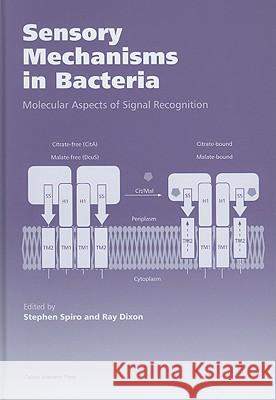Sensory Mechanisms in Bacteria: Molecular Aspects of Signal Recognition » książka
Sensory Mechanisms in Bacteria: Molecular Aspects of Signal Recognition
ISBN-13: 9781904455691 / Angielski / Twarda / 2010 / 267 str.
Bacteria have evolved with extraordinary abilities to regulate aspects of their behavior (such as gene expression) in response to signals in the intracellular and extracellular environment. Key to this are the diverse macromolecules (proteins or RNA) that sense change through direct interactions with chemical or physical stimuli. In recent years, there have been tremendous advances in understanding the structure and function of these signal receptors, and how interaction with the signal triggers changes in their activity and downstream events. For some systems, this understanding extends to the atomic level. In this unique book, an international team of experts reviews a selection of important model systems, providing a timely snapshot of the current state of research in the field. Sensory Mechanisms in Bacteria opens with an introductory chapter that reviews the diversity of signal recognition mechanisms, illustrating the breadth of the field. Subsequent chapters include descriptions of the sensing of ligands (-ketoglutarate, adenylate energy charge, glutamine, and xenobiotic compounds), chemoreceptors, iron-sulfur cluster-based sensors, metal-dependent and metal-responsive sensors, thiol-based sensors, and PDZ domains as sensors of other proteins. The book is essential reading for everyone with an interest in sensory mechanisms, regulatory networks, and responses to environmental stress in bacteria.











